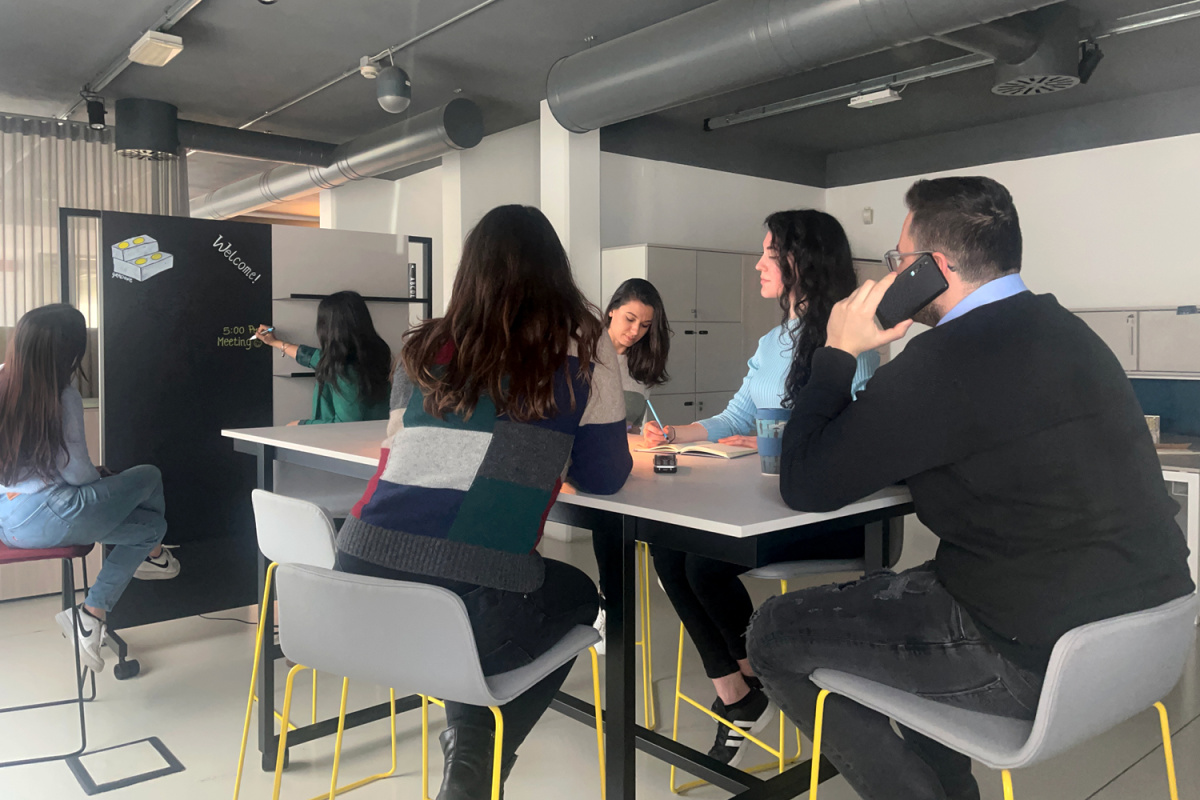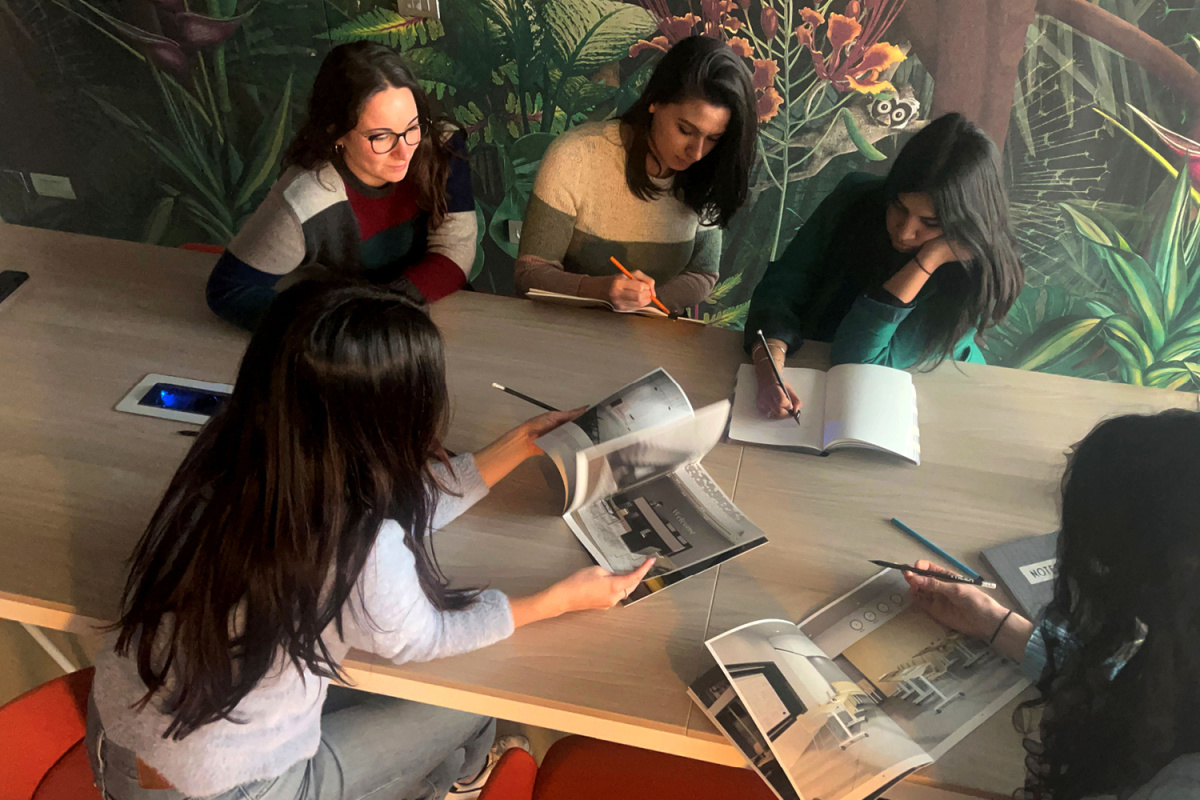What should the ideal office look like to be “youth-proof”? What features should the workplace and work management have in order to meet the needs of Millennials and Gen Z?
We asked this question to our under-35 employees, which are both practical users of working environments and experts of the market and its dynamics.
Here are the results of our interviews!
A matter of comfort, from company to workstation
Global market trends are the same as those found in the words of the young generation that works at Frezza: the approach to office design must be ‘human-centric’.
Layout needs to be rethought to create new spaces that are based on the current needs of workers.
There is a growing demand for areas that can serve as comfortable and informal meeting rooms, where one can also meet with people from outside the company. These areas should be furnished in a way that encourages collaboration, for example through the use of high tables, preferably with wheels like Nomad.
In addition to these areas, there should also be spaces that are not strictly work-related, such as lounge areas and work cafès, where one can relax and socialise, or fully equipped lunch areas (also in terms of appliances), where people can manage their meals independently during their break.
Areas that can cater for non-work related needs, such as education rooms, a gym, or a company nursery, where popular requests too.
All-round comfort is also a requirement when it comes to the workstation: many expressed a desire for a sit-stand desk, combined with an ergonomic seat with different types of adjustments.

Attention to sustainability
A greener office: young people’s sensitivity towards the environment made itself heard during our interview. According to the interviewees, corporate sustainability must involve many different areas, ranging from the digitilisation of documents (with the consequent abolition of paper filing) to energy-saving initiatives and a greener production plant.
More attention should also be paid, by every single individual, to issues such as separate waste collection and abolition of single-use plastic (bottles, coffee stirrers, snack wrappers, etc.).
Green also becomes a design goal: young people want offices with plants, green walls and open outdoor spaces.

Ideas that raise uncertainties
Among the needs that emerged during the interview, there are some that still raise doubts.
The first concerns open space environments. On one hand, this space is considered great for collaboration and for displaying products. On the other hand, however, there is a fear that the noise could be distracting, especially for those who have always worked in small spaces and with few people.
Flexibility is also seen as a double-edged sword. Many have expressed a desire to take advantage of smart working, hybrid working and flexible entry and exit times, in order to achieve a better home-work balance.
However, this can lead to inconveniences in office life itself, due to the difficulty in finding colleagues when working on the same project, because of the different working hours.
Today’s young people are very sensitive to occupational well-being issues and have a good understanding of the mechanisms that influence the increasingly rapid changes in the working world. It is also up to the designer to interpret the needs of the new generations, offering flexible and constantly up-to-date spaces. This can only be achieved by embracing a more human-centric vision, therefore creating a true design for evolving humans.

